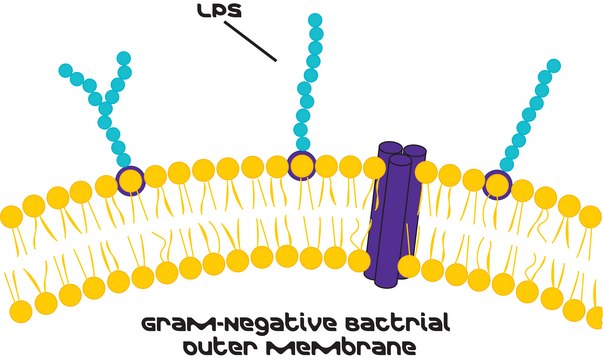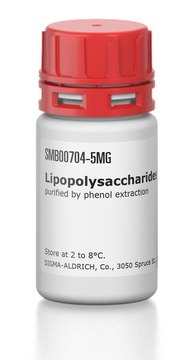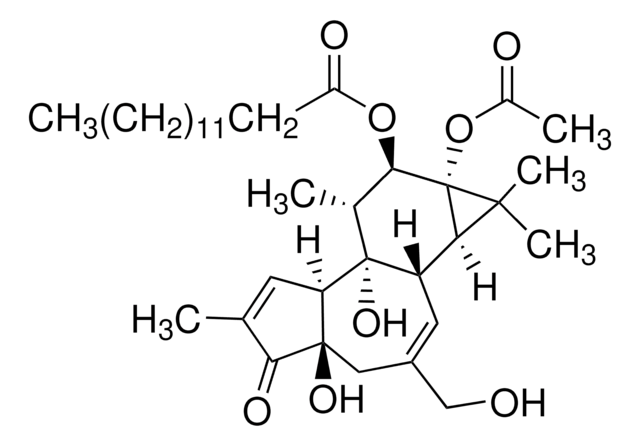L8643
Lipopolysaccharides from Pseudomonas aeruginosa 10
purified by gel-filtration chromatography
Synonym(s):
LPS
About This Item
Recommended Products
biological source
Pseudomonas aeruginosa (10)
Quality Level
form
lyophilized powder
purified by
gel-filtration chromatography
impurities
<3% Protein (Lowry)
color
white to faint yellow
solubility
water: 4.90-5.10 mg/mL, cloudy to hazy, colorless to faintly yellow
storage temp.
2-8°C
Looking for similar products? Visit Product Comparison Guide
Application
Other Notes
related product
Storage Class Code
11 - Combustible Solids
WGK
WGK 3
Flash Point(F)
Not applicable
Flash Point(C)
Not applicable
Personal Protective Equipment
Choose from one of the most recent versions:
Certificates of Analysis (COA)
Don't see the Right Version?
If you require a particular version, you can look up a specific certificate by the Lot or Batch number.
Already Own This Product?
Find documentation for the products that you have recently purchased in the Document Library.
Articles
Explore the structure, function, and diverse applications of Lipopolysaccharides. Discover their role in bacteria, serological specificity, and research potential.
Our team of scientists has experience in all areas of research including Life Science, Material Science, Chemical Synthesis, Chromatography, Analytical and many others.
Contact Technical Service

